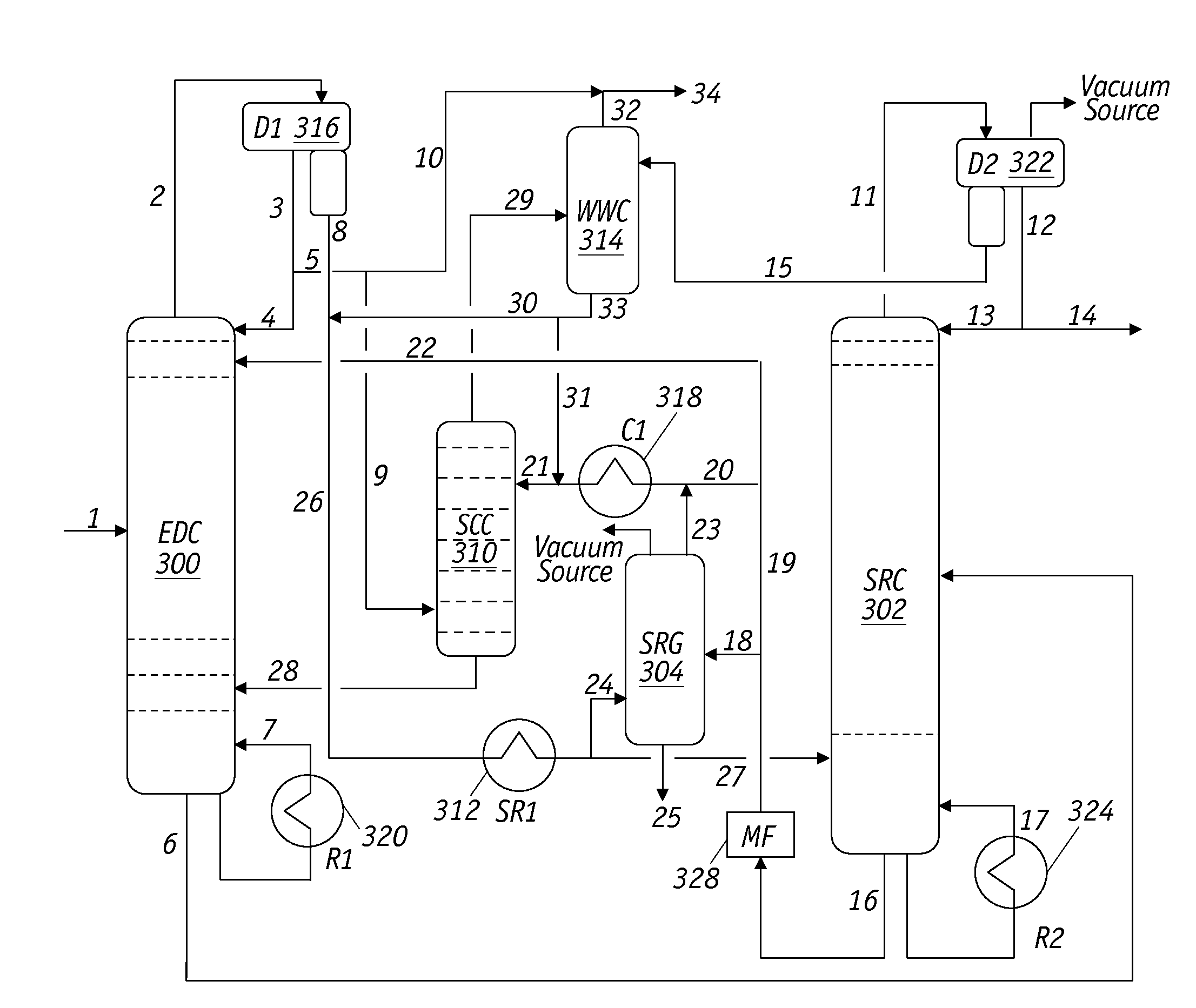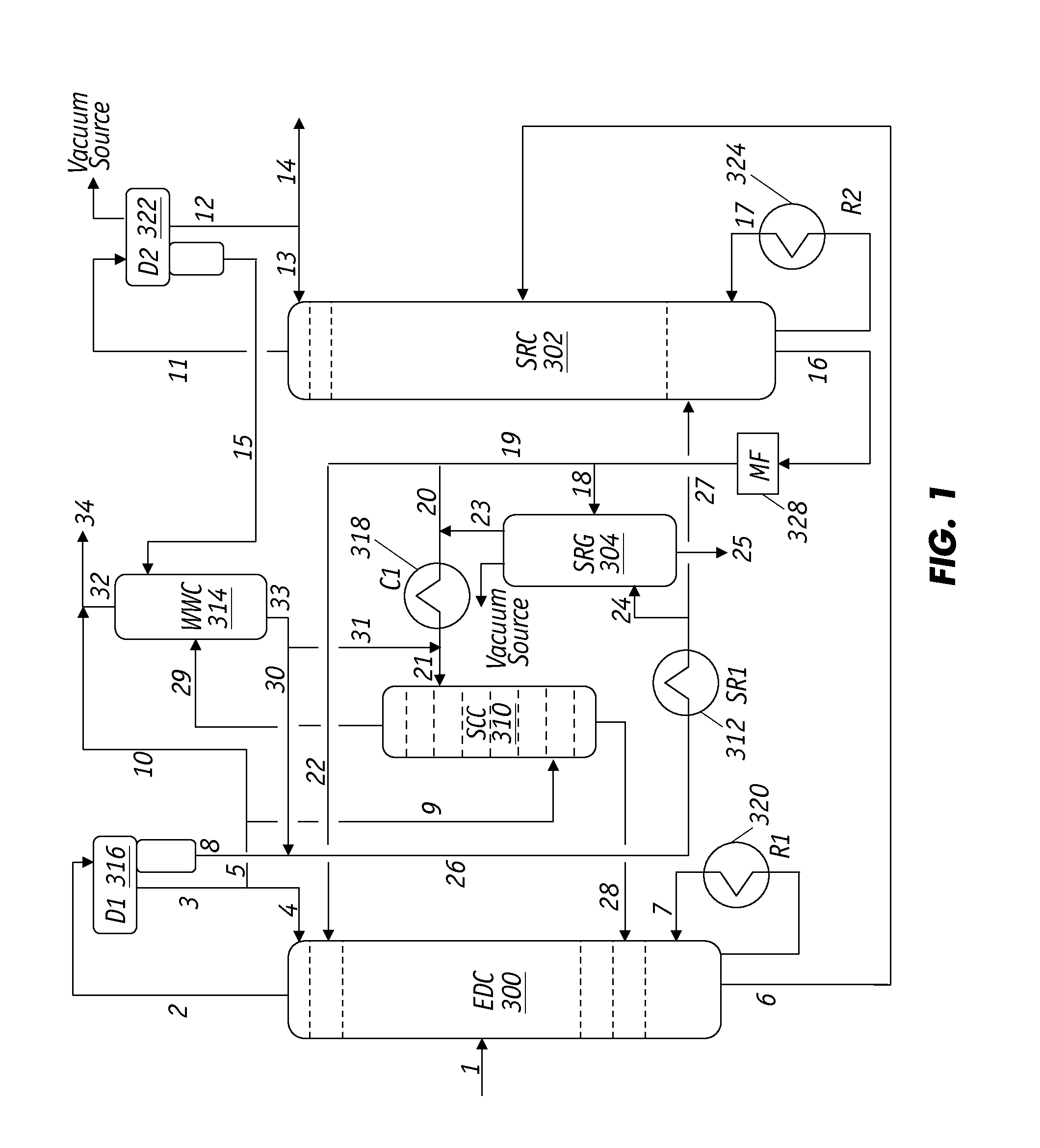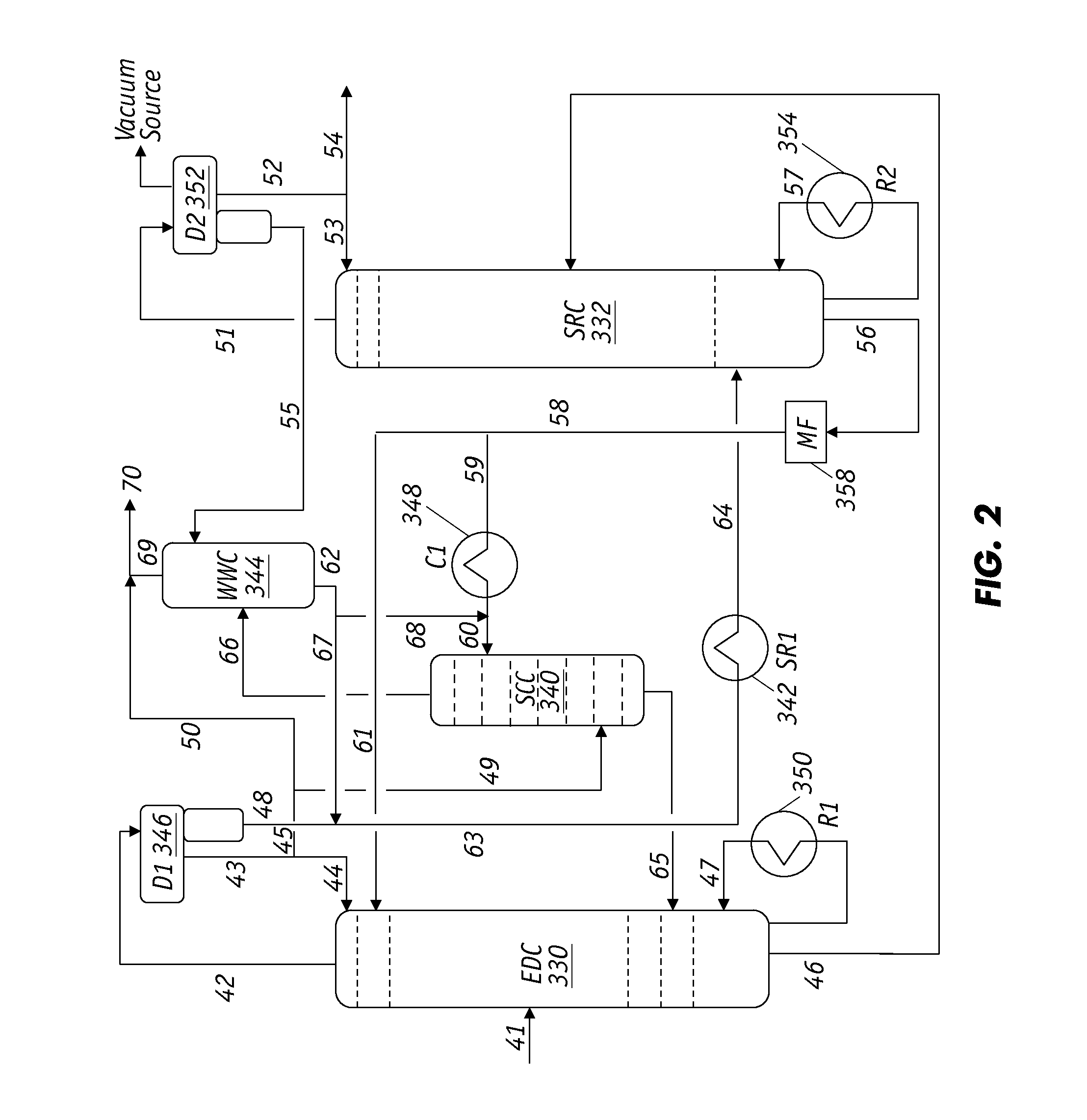Extraction Prcoess with Novel Solvent Regeneration Methods
a solvent regeneration and extraction method technology, applied in extraction purification/separation, separation processes, azeotropic/extractive distillation, etc., can solve the problems of inconvenient ed process solvent regeneration of asselin scheme, potential disaster, and difficulty in achieving the proper balance and distribution of process water in the closed system, so as to reduce the function of or energy-intensive
- Summary
- Abstract
- Description
- Claims
- Application Information
AI Technical Summary
Benefits of technology
Problems solved by technology
Method used
Image
Examples
Embodiment Construction
[0036]The techniques of the present invention can be integration into an ED or LLE process for the selective separation and recovery of polar HCs from a mixture containing the polar and less polar HCs. The inventive processes will be described in relation to the separation and recovery of aromatic HCs from mixtures containing aromatics and non-aromatics, comprising paraffins, isoparaffins, naphthenes, and olefins, but it is understood that the techniques are applicable to a multitude of mixtures. Suitable extractive solvents include, for example, sulfolane, alkyl-sulfolane, N-formyl morpholine, N-methyl pyrrolidone, tetraethylene glycol, triethylene glycol, diethylene glycol, and mixtures thereof, with water as the co-solvent. For aromatic HC recovery, the preferred solvents for the ED process comprise sulfolane with water as the co-solvent and non-aqueous N-formyl morpholine; the preferred solvents for the LLE process comprise sulfolane and tetraethylene glycol and both with water ...
PUM
| Property | Measurement | Unit |
|---|---|---|
| boiling points | aaaaa | aaaaa |
| weight ratio | aaaaa | aaaaa |
| weight ratio | aaaaa | aaaaa |
Abstract
Description
Claims
Application Information
 Login to View More
Login to View More - R&D
- Intellectual Property
- Life Sciences
- Materials
- Tech Scout
- Unparalleled Data Quality
- Higher Quality Content
- 60% Fewer Hallucinations
Browse by: Latest US Patents, China's latest patents, Technical Efficacy Thesaurus, Application Domain, Technology Topic, Popular Technical Reports.
© 2025 PatSnap. All rights reserved.Legal|Privacy policy|Modern Slavery Act Transparency Statement|Sitemap|About US| Contact US: help@patsnap.com



